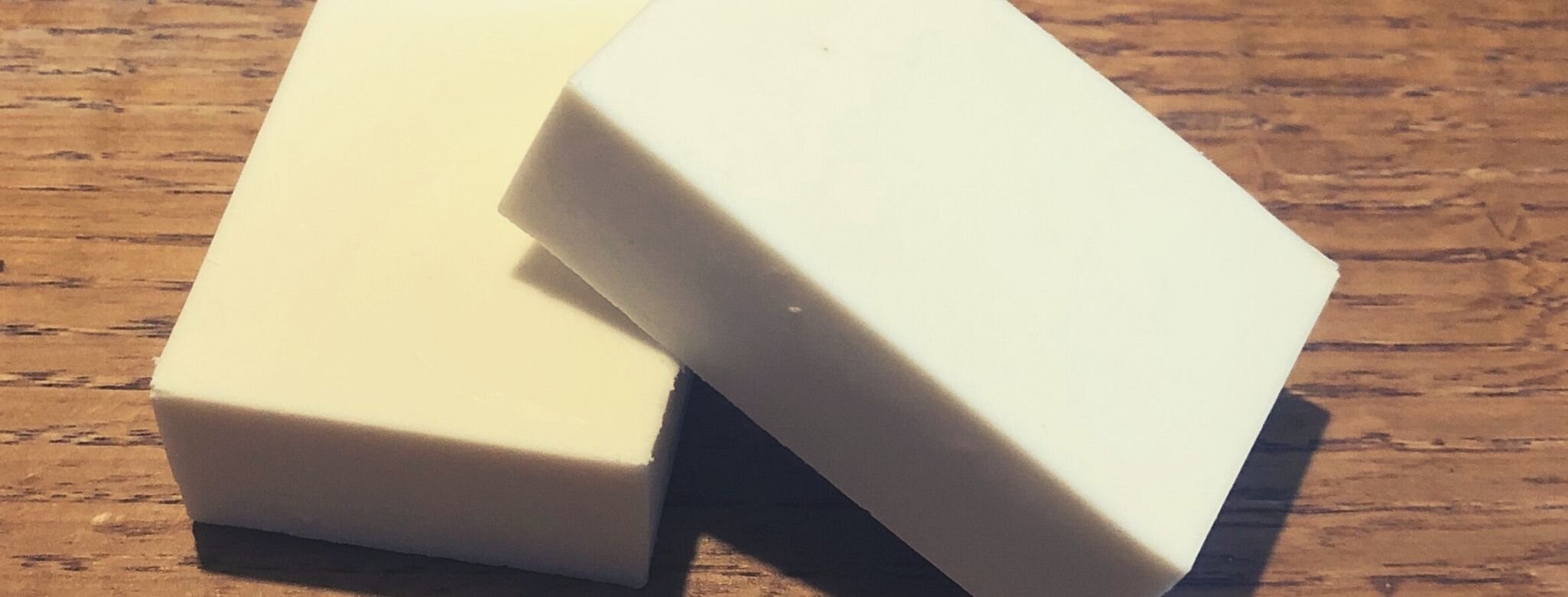Tallow Soap Recipe
Suffice to say, I am not a vegan and I have been curious about tallow soap for quite some time so thought seeing as I like making soap and since I have been curious, I might as well give it a try.
I remember reading the ingredients list of Clarins face bar when it was a teenager and at that time it was not made of palm oil but tallow. It was a nice white hard bar. So what is tallow?
Tallow is a generic term for any type of rendered fat. In the US it is most commonly used to refer to what we here in the UK call beef ‘dripping’ – rendered beef fat. To do this soap I used beef dripping from the supermarket that was delivered as 250 g wrapped bars. When opened up, I noticed that it has a distinct subtle beefy scent and was almost pure white in colour. 250 g cost me £0.79 which was actually double the price of lard (pig fat.)
I have seen recipes on line that advise to render beef fat even if it came from the supermarket, however, from looking at the nutritional information it appeared that the beef dripping I had was 100% fat and no impurities so I used it as it came!
Properties of Tallow
Tallow contains the glycerides palmitic, stearic, oleic and linoleic . Minor components include cholesterol and arachidonic, elaidic, and vaccenic acids (CIR). The reported melting point ranges were 31-44"C. The solidification range of Tallow is 40-46°C, It has a similar texture to palm oil. In cosmetics it is classed as an emollient and an occlusive ingredient that will trap moisture in the skin. As such tallow has been traditionally used in ointments and of course, soap. Below is the typical fatty acid profile of beef tallow.
Tallow Fatty Acid Profile
I made two types of tallow soap. One is a 100% beef drippings with a 8% superfat. The other is a combination of tallow, coconut and castor oil. I didnt use a water discount. The international nomeclature for cosmetic ingredients for sodium or salt of tallow made with sodium hydroxide (AaOH) is sodium tallowate. Soap made with potassium hydroxide (KOH) is potassium tallowate.
Below I have given the percentage values you would need to punch into your lye calculator. I personally use SoapMaker 3 but you could use Soap Calc or similar. I didn’t use any water discount to make this soap. If you have not any experience in making soap, please read the SOAP MAKING FULL TUTORIAL.
When making both soaps, you can not allow the tallow to cool too much as it will solidify, and it needs to be liquid.
100% Tallow Soap
Tallow, Coconut & Castor Oil Soap
Method
Melt oils and butters.
Measure out water and lye in separate beakers
Gently pour the lye into the water and stir until dissolved
Pour lye solution into melted oils and stir with a stick blender until trace is reached
Pour into suitable molds
After 24 hours remove from molds and leave to cure for 4-6 weeks
Verdict
These soaps are hard, as one would expect, with good foaming. I didn’t use a fragrance so I got the virgin smell which was pretty neutral albeit slightly beefy. Both instantly reminded me of the soaps we used in primary school in the early 1980’s; I immediately remembered the (what must have been) tiny school toilets and sinks and of course the little tallow soaps we used. It’s always nice to be taken back in time, so on that basis, this soap is wonderful! Next time, I think I will add some fragrance and colour to the soap, as it really didn’t feel luxurious, as everyone has been telling me it should.




